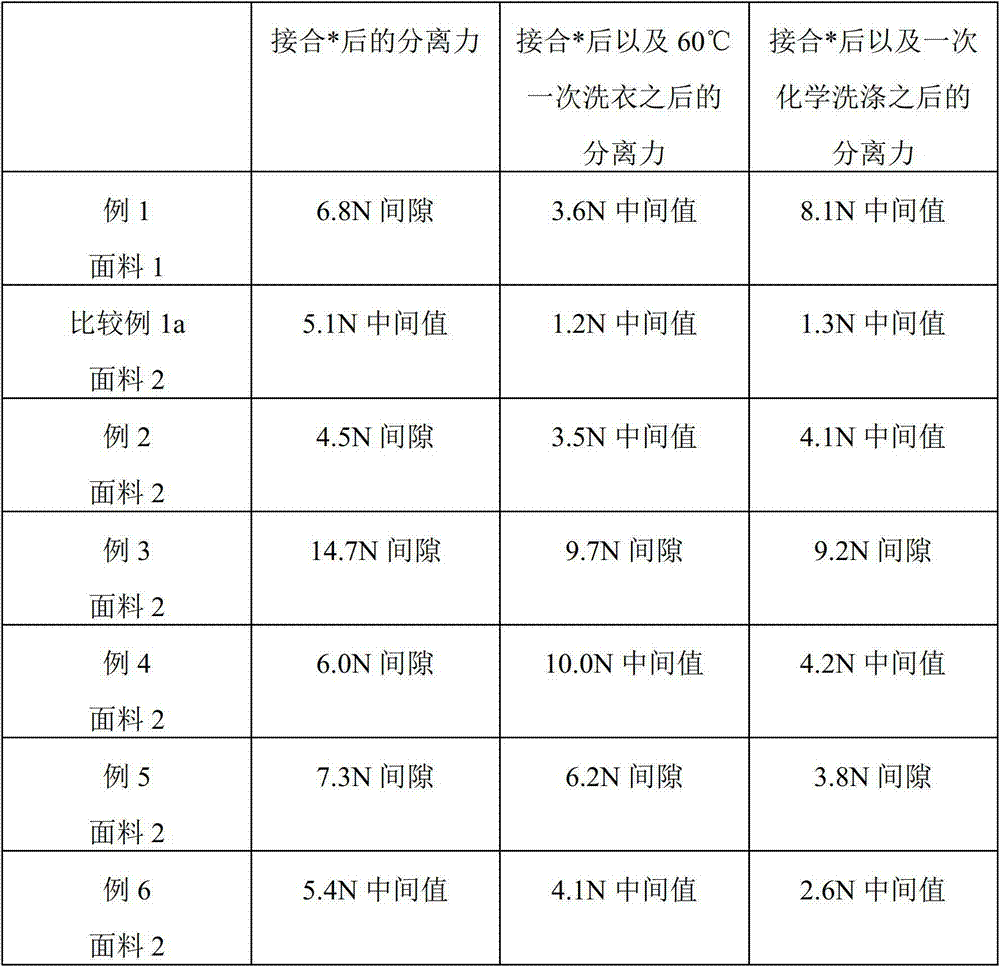Adhesive compound for hot-sealing inserts
A hot-pressing bonding and adhesive technology, which is applied in the direction of adhesives, adhesive heating bonding methods, adhesive types, etc., can solve the problems of loss of three-dimensional configuration, high cost, inability to obtain results, etc., and achieve good separation. The effect of strength, simple manufacture, and simple handling
- Summary
- Abstract
- Description
- Claims
- Application Information
AI Technical Summary
Problems solved by technology
Method used
Image
Examples
example 1
[0046] At room temperature, 290 g (56% by weight of the total weight of the undried adhesive including all ingredients) is based on self-crosslinking styrene with a glass transition temperature of Tg = 2°C, a solids content of 60%, and slightly viscous - Aqueous dispersion of polymer of acrylate-copolymer added as viscose to 150 g of water. To this mixture, 1.5 g of melanin based on carbon black and 60 g (11.6% by weight of the total weight of the undried adhesive including all components) of copolyamide (melting temperature range from 90 to 160° C.) were added with stirring. hot melt adhesive. Subsequently, 15 g of a polyacrylate / acrylic acid copolymer were introduced as an aqueous dispersion with a solids content of 33% as thickener. After a stirring time of 30 minutes and a maturation period of 24 hours, the paste was embossed onto the carrier material by means of a squeegee through a perforated template (CP180, hole diameter 0.43 mm) by means of the paste pressing method ...
example 2
[0048] At room temperature, 290 g (56% by weight of the total weight of the undried adhesive including all ingredients) was based on carboxyl-modified A polymer emulsion of acrylic polymer was added as viscose to 150 g of water. To this mixture, 60 g (11.6% by weight of the total weight of the undried adhesive including all components) of hotmelt adhesive based on copolyamide (melting temperature range 90 to 160° C.) are added with stirring. 15 g of a polyacrylate / acrylic acid copolymer were introduced into the mixture as a thickener as an aqueous dispersion with a solids content of 33%. After a stirring time of 30 minutes and a maturation period of 24 hours, the paste was embossed onto the carrier material by means of a squeegee through a perforated template (CP180, hole diameter 0.43 mm) by means of the paste pressing method (rotary screen printing), The carrier material is thermally cured by PS method with 24g / m 2 A man-made fiber nonwoven by weight per unit area consisti...
example 3
[0050] At room temperature, 145 g (accounting for 50% by weight of the total weight of the undried adhesive including all ingredients) based on acrylate (with a glass transition temperature (DSC) of Tg = -43 ° C, a minimum film formation temperature of about 2 A man-made fiber non-woven fabric with a weight per unit area consisting of 65% polyamide fibers and 35% polyester fibers. The printed nonwovens were dried at 130° C. for 90 seconds in an air-circulating oven. The layer of adhesive after drying can reach 20g / m 2 .
PUM
| Property | Measurement | Unit |
|---|---|---|
| glass transition temperature | aaaaa | aaaaa |
| glass transition temperature | aaaaa | aaaaa |
| glass transition temperature | aaaaa | aaaaa |
Abstract
Description
Claims
Application Information
 Login to View More
Login to View More - R&D
- Intellectual Property
- Life Sciences
- Materials
- Tech Scout
- Unparalleled Data Quality
- Higher Quality Content
- 60% Fewer Hallucinations
Browse by: Latest US Patents, China's latest patents, Technical Efficacy Thesaurus, Application Domain, Technology Topic, Popular Technical Reports.
© 2025 PatSnap. All rights reserved.Legal|Privacy policy|Modern Slavery Act Transparency Statement|Sitemap|About US| Contact US: help@patsnap.com


